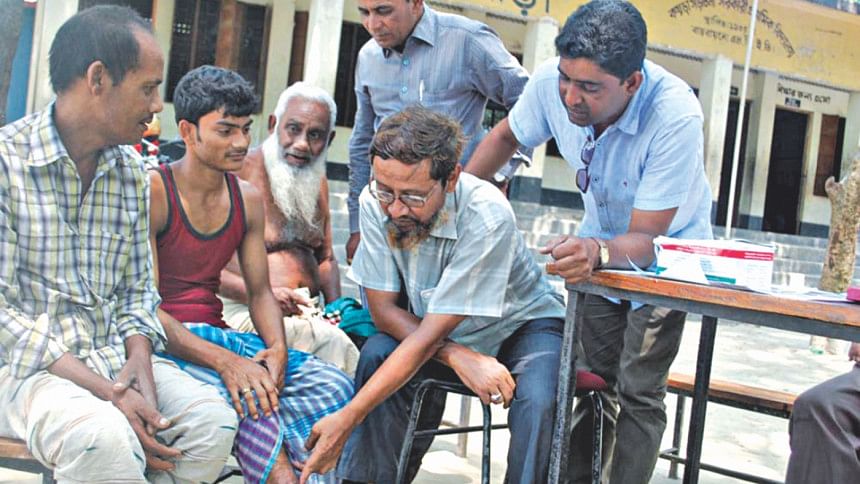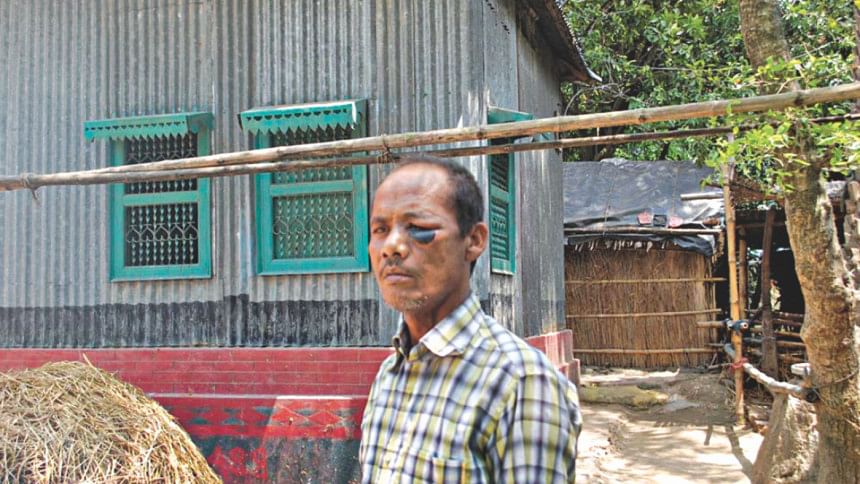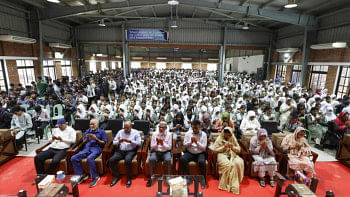Monitoring lapses real concern

Cattle farmer Aksed Ali of Koira Soratola in Ullapara was worried when one of his cows fell sick and died almost immediately. After his second cow became sick, he slaughtered it and sold the meat to a local butcher at a cheap rate.
“One of my six cows fell sick and died two weeks ago, causing me a loss of Tk 40,000. When my second cow got infected, I slaughtered it and sold the meat to recover some loss,” Aksed said.
Ali Ahmed, also from the same village, slaughtered a diseased cow after it fell sick last month.
Asked why he slaughtered the diseased cattle, Ali said he had done so only to recoup some losses. “I just got half the price of the cow.”
Aksed and Ali are among the 44 people of Koira Soratola who were diagnosed with anthrax infection. According to district health officials, it happened because the duo were involved in the processing of meat.
REASONS OF OUTBREAK
Reckless slaughtering of diseased cattle was the reason behind the recent outbreak of anthrax in Ullapara, Shahzadpur and Kamarkhand upazilas of Sirajganj, according to the district health department.
Officials of the district livestock department said that although they were trying to make people aware, locals were not following their directives. Rather, the villagers were slaughtering diseased cattle without informing them.
However, locals claimed that had there been proper monitoring by the district livestock department officials, the outbreak in the areas could have been prevented.
Besides, they alleged that the livestock department officials had not given vaccines to animals in the last one year. Vaccines were given only after the animals got infected, not before.
A total of 125 people were infected with anthrax in the three upazilas until May 30. Of them, 44 were in the Ullapara's Koira Soratola village alone, 32 in Kamarkhand and 49 in Shahzadpur, according to the office of the district civil surgeon.
The district health department formed 35 medical teams in the affected upazilas to tackle the outbreak. Of them, five teams had been working in Kamarkhand upazila and the other 15 teams are working in Ullapara and Shahzadpur upazilas for the last couple of weeks.
Sirajganj is one of the largest milk producing areas in the country. There are approximately nine lakh cattle in the district. Of them, some 3.5 lakh are in Shahzadpur, 2 lakh in Ullapara, and 55,000 in Kamarkhand upazila, according to district livestock officials.
According to experts, Sirajganj is most vulnerable to anthrax infection because the germ of the disease has been there for a long time. Caused by bacterium Bacillus Anthracis, anthrax is an acute infectious disease which attacks both animals and humans.
“The bacteria normally rest in the soil, and can survive for 60 to 100 years in that state. It might have been brought to the district through any diseased animal earlier. When the animal died, people buried it in the field. So the germ got mixed with the soil,” said Gulzar Hossain, deputy director of regional disease research centre in Sirajganj.
Cattle get infected while grazing and die within four to five days, he explained.
“There is no way to destroy the germ. We have to take preventive measures so that the animals cannot spread the disease,” he said.
If the animal gets proper vaccination in time, the disease will not spread, he added.
OFFICIALS' SAY
Talking to The Daily Star, District Livestock Officer (DLO) Akteruzzaman Bhuiyan said they have a shortage of manpower to monitor slaughter of animals in the district.
Although there are posts for two veterinary surgeons and seven officials in each of the nine upazilas in the district, only six surgeons and around 35 officials are now working there, he informed.

The DLO said they were trying to make people aware of the risk in slaughtering diseased animals, but most people were not following the directives. Butchers had also been ordered to get their animals certified by livestock officers before slaughtering, he added.
“Villagers slaughter animals soon after they fell sick, without informing local livestock officials. Besides, it is very difficult to monitor slaughter at every market as most of the villages are in remote areas,” he said.
Akteruzzaman said a total of 2.25 lakh cattle were given vaccines in the last few weeks in the affected upazilas, and the vaccination programme would cover other areas soon.
ANTHRAX IN SIRAJGANJ
Anthrax patients in the three upazilas suffered infections on different parts of their bodies, including hands and legs, and had itches and pain. However, those were not life threatening, experts said.
“In Sirajganj, we've surveyed and found anthrax infection on people's skin. As they came in contact with the blood and meat of the diseased animal, they got infected. However, this is not life threatening. Strong antibiotics can help recovery within few weeks,” said Ismail Faruk, chief scientific officer of the Institute of Epidemiology, Disease Control and Research.
However, if the internal organs like food pipe or lungs are infected, that would be more serious and could lead to death, he said.
“But we have not found any such patient till date,” Faruk said.
“The germ of anthrax can be destroyed in 60 degree Celsius temperature, so the cooked meat can't affect the human body,” the officer added.

 For all latest news, follow The Daily Star's Google News channel.
For all latest news, follow The Daily Star's Google News channel. 








Comments